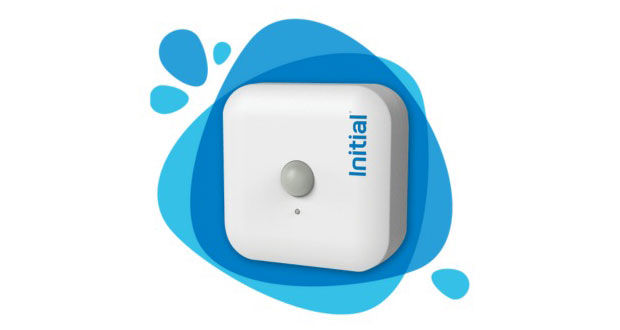By Jamie Woodhall, Technical and Innovations Manager at Initial Washroom Hygiene
As economic pressures tighten the purse strings of businesses across many sectors, it is worth exploring new ways to help reduce unnecessary operational costs. Within commercial buildings, the answer could be found in an unexpected place…the washroom.
Every year, more than 740 billion litres of water is flushed down the UK’s toilets*, enough to fill 300,000 Olympic-sized swimming pools. Within office-based buildings, flushing urinals and toilets can account for up to 63 per cent of total water usage**. However, advancements in flush control mechanisms now allow for less water to be used while still maintaining hygiene and cleanliness. This means that implementing eco-friendly water-saving measures within washrooms could not only contribute to sustainable environmental practices, but also present businesses with potentially big annual savings on their water bills.
Urinals are a common sight in public washrooms, and they can be a significant and expensive source of water wastage. The water consumption of traditional urinals is typically quite high as they require a constant flow of water to help prevent blockages and maintain hygiene. This constant flow of water can result in water wastage and a resulting increase in water bills for businesses. Additionally, not maintaining urinals properly can lead to leaks and other issues, further increasing water consumption and costs.
Installing a sensor
Incorporating an infrared sensor into a urinal can be an excellent way to help reduce water consumption and lower subsequent costs. These sensors detect when the urinal is in use and activate the flush mechanism only when necessary, leading to significant water savings. For instance, Initial Washroom Hygiene’s Infra-Red (PIR) Water Manager uses sensor technology to ensure urinals are flushed regularly but only when in use, resulting in potential savings of over £700 per year*** for businesses. This technology not only saves money, but it also prevents the build-up of potentially harmful bacteria, which can lead to unpleasant odours and blockages.
By installing an infrared sensor on a urinal, not only reduces water usage and costs, but also helps to improve hygiene standards in washroom facilities. The use of this technology can provide a more efficient and sustainable washroom experience for your employees, customers and visitors. It’s a simple and effective way to help ensure that your washroom facilities are more eco-friendly, cost-effective, and hygienic.
From a sustainability perspective, by reducing water consumption, businesses can minimise their impact on the environment and contribute to conservation efforts. With water wastage presenting one of the world’s most pressing environmental challenges, water-saving management in the washroom is even more crucial. As businesses continue to face economic pressures and evolving water supply regulations, adopting water-saving measures such as infrared sensors on urinals can help them become more sustainable and socially responsible.
What’s more, the Water Supply Regulations 1999 state that businesses have a legal responsibility to control the amount of water they use. This regulation requires that businesses take reasonable steps to conserve water and reduce waste, including monitoring and managing their water consumption. By adopting water-saving measures such as installing infrared sensors on urinals, businesses can not only comply with these regulations but also demonstrate their commitment to social responsibility as well as helping to save money on their utility bills.
Does your business pass the sniff test?
Washrooms may not be the most glamorous part of a business, but they are certainly one of the most important. After all, nobody wants to use a washroom that smells unpleasant. And when it comes to keeping visitors happy, a clean and non-smelly bathroom is key. Research from Initial Washroom Hygiene has shown that over 80 per cent of people try to leave a washroom as quickly as possible if it smells bad, showing that smell can directly impact behaviour.****
Some people might have concerns that waterless urinals are more likely to lead to malodour issues in washrooms but that’s simply not the case. What is true however is that whether you’re dealing with a traditional flushing toilet, a flushing urinal or a waterless urinal, the key to preventing the build-up of uric acid and other malodour-causing deposits is regular cleaning and maintenance.
Regular cleaning and water management
Initial Washroom Hygiene can also provide an Eco Clear Urinal Solution, a environmentally friendly four part service which can help to reduce urinal water use, help to prevent drain blockages and bad odours, in turn, help to reduce maintenance costs and improve the overall hygiene standards of the washroom.
The Eco Clear sleeve contains good bacteria that can break down uric acid, salts and scale, eliminating the need for harmful cleaning chemicals and reducing the impact on the environment. The patented odour valve lock sleeve also helps to prevent unpleasant smells in the washroom, creating a more pleasant experience for those using the facilities. Moreover, the Eco Clear control valve can integrate to fit existing flush valve urinals, which means businesses don’t have to invest in new waterless urinals. When used together with the PIR Water Manager, this service can further help reduce water usage and save on water bills, making it a cost-effective solution for businesses.
Such innovative solutions are easy to install and replace, and they provide an eco-friendly way to help reduce water usage, improve urinal hygiene, and prevent blockages caused by uric scale build-up or unwanted items like chewing gum and cigarettes entering the pipes.
What are the benefits?
Installing water-saving urinal devices in the washrooms if your business could deliver a multitude of benefits. These devices not only provide sustainability and economic value by helping to reduce water usage and bills, but they can also help to prevent blockages in drainage systems. Finally, helping to ensure an odour-free washroom environment provides a pleasant user experience, and will leave a positive impression on those visiting your washroom.
Investing in water-saving urinal measures is a smart business decision that could benefit your bottom line, the environment, and your stakeholders.
For effective and cost-saving water-saving services and products, contact Initial Washroom Hygiene.
* https://energysavingtrust.org.uk/report/home-water-consumption-analysis/
** https://www.tradewashrooms.co.uk/washroom-guidance/water-efficiency-unified-water-label/
***United Utilities – What does a litre or cubic metre of water cost?
****https://www.initial.com/blog/air-care/smelly-public-washrooms





